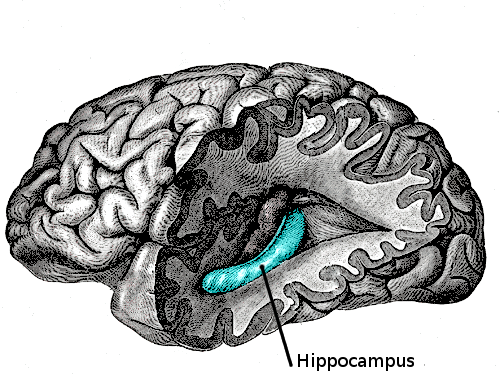Two major areas of the brain shown to be connected
August 16, 2012

Modified from a scan of a plate of “Posterior and inferior cornua of left lateral ventricle exposed from the side” in Gray’s Anatomy (credit: Looie496/Wikimedia Commons)
A clue to understanding certain cognitive and mental disorders may involve two parts of the brain which were previously thought to have independent functions, according to a McGill University team of researchers led by Prof. Yogita Chudasama, of the Laboratory of Brain and Behavior, Department of Psychology.
The McGill team discovered a critical interaction between two prominent brain areas: the hippocampus, a well-known memory structure made famous by Dr. Brenda Milner’s patient H.M., and the prefrontal cortex, which is involved in decision-making and inhibiting inappropriate behaviours.
“We had always thought that the hippocampus and the prefrontal cortex functioned independently,” says Prof. Chudasama. “Our latest study provides the first indication that that is not the case.”
The team’s finding, just published in the Journal of Neuroscience, reveals a critical interaction between these two brain areas and the control of behavior, and may advance the treatment of some cognitive and mental disorders including schizophrenia, and depression. The interaction between the hippocampus and the prefrontal cortex shows that brain circuits function not just as specific parts of the brain, but are linked together and work as a system.
“Although the prefrontal cortex has long been known to be the driving force that steers our behavior, pushing us to make good decisions and withhold improper actions, it turns out that it can’t do this unless it interacts with the hippocampus,” added Prof. Chudasama. “We found that when we prevented these two structures from communicating with each other, like humans with compulsive disorders, rats persisted with behaviours that were not good for them; they didn’t correct their errant behaviours and could not control their natural urges.
The ability to control impulsive urges or inhibit our actions allows us to interact normally in personal or social situations, and this type of behaviour depends on the normal interaction of the hippocampus and the prefrontal cortex. This result provides a means for understanding the neural basis for social and cognitive deficits in disorders of brain and behaviour, such as those with frontotemporal dementia”, concludes Prof. Chudasama.